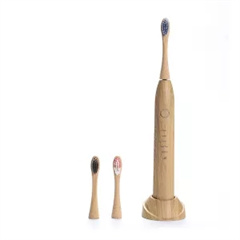Maintaining healthy gums is essential for overall oral health. Here’s an effective brushing routine to help improve and maintain gum health:
- Choose the Right Tools:
- Use a soft-bristle toothbrush to prevent damaging your gums.
- Select a fluoride toothpaste that helps fight tooth decay and strengthen enamel.
- Brushing Technique:
- Hold your toothbrush at a 45-degree angle to your gums.
- Use gentle, circular motions to brush both the outer and inner surfaces of your teeth.
- Pay extra attention to the gumline, where plaque tends to accumulate.
- Brush your tongue gently to remove bacteria and freshen your breath.
- Duration:
- Brush your teeth for at least two minutes during each session.
- Consider using a timer or an electric toothbrush with a built-in timer to ensure you’re brushing for the recommended time.
- Frequency:
- Brush your teeth at least twice a day, preferably in the morning and before bedtime.
- If possible, brush after meals to remove food particles and prevent plaque buildup.
- Pressure and Motion:
- Avoid aggressive brushing, as it can harm your gums and tooth enamel.
- Use gentle pressure and circular motions to effectively clean your teeth without causing damage.
- Interdental Cleaning:
- Use dental floss or interdental brushes to clean between your teeth where your toothbrush can’t reach.
- Cleaning these areas removes plaque and food particles that can contribute to gum disease.
- Rinse Thoroughly:
- After brushing and flossing, rinse your mouth with water to remove any remaining debris.
- Regular Dental Visits:
- Schedule regular dental check-ups and professional cleanings to monitor your gum health and receive expert care.
- Healthy Lifestyle:
- A balanced diet and avoiding sugary snacks and drinks can help prevent gum disease.
- Stay hydrated and limit tobacco use, which can contribute to gum problems.
- Manage Stress:
- Chronic stress can impact your immune system and gum health. Practice stress-relief techniques such as exercise, meditation, and yoga.
- Stay Hydrated:
- Drinking water helps wash away food particles and bacteria that can contribute to gum issues.
- Monitor Changes:
- Keep an eye out for signs of gum problems, including redness, swelling, bleeding while brushing, or persistent bad breath. Consult a dentist if you notice these symptoms.
Remember, gum health is closely linked to your overall oral hygiene routine and your lifestyle choices. By following this brushing routine and maintaining good oral care practices, you can help keep your gums healthy and prevent gum disease. If you have specific concerns or conditions, it’s advisable to consult with your dentist for personalized guidance.








